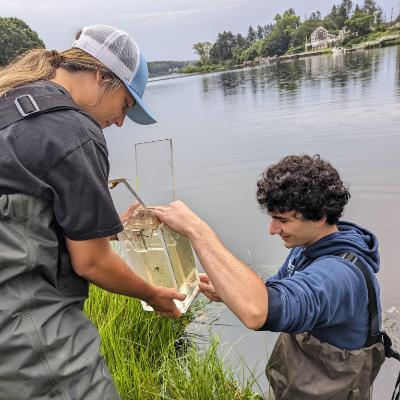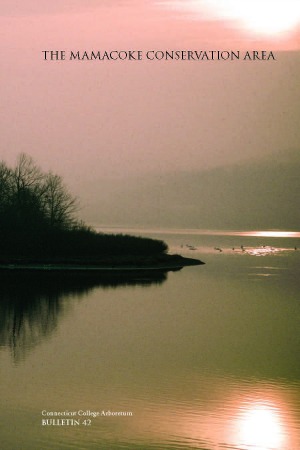
Mamacoke Research
Faculty, staff and students at Connecticut College are actively conducting research and monitoring Mamacoke tidal marsh. For more details, follow this link to see updates on current research.
Mamacoke Research

Faculty, staff and students at Connecticut College are actively conducting research and monitoring Mamacoke tidal marsh. For more details, follow this link to see updates on current research.
Mamacoke Research
The National Audubon Society has recognized the shoreline of the Thames River between Harrison’s Landing and Smith Cove in Quaker Hill (Waterford) as an Important Bird Area for Connecticut. Important Bird Areas constitute a network of sites in the United States and other countries that provide critically important habitat for bird populations. The site on the Thames River centers on Mamacoke Island, which is a designated natural area within the Connecticut College Arboretum. It includes three coves and two salt ponds that provide important habitat for a variety of ducks that spend the winter in Connecticut. Smith and Mamacoke coves are especially important as feeding areas for ducks during periods of intense cold during mid winter when freshwater lakes, reservoirs and rivers are covered with ice.
Please note: if you wish to visit Mamacoke Island, consult a tide chart and plan your trip to take place near low tide. A Story Map with detailed tour can be found here.

The brackish water of the Thames River generally does not freeze completely and thus provides an open-water refuge for Hooded Mergansers, Black Ducks, Canvasbacks and other waterfowl species. Although large flocks of ducks only concentrate in these coves for a few weeks each year, this section of the Thames River may still be critically important for their survival through the winter. The coves also support Bald Eagles, Pied-billed Grebes and American Coots during the winter, and ospreys and a variety of species of herons during the summer. The adjacent upland areas within the Connecticut College Arboretum are also important for birds.

Bulletin 42
Arboretum Director Glenn Dreyer, Biology Professor Robert Askins and student Scott Peterson ’06 developed a conservation plan for this area based on Audubon Society guidelines: The Mamacoke Conservation Area .
From this, Arboretum Bulletin No. 42, The Mamacoke Conservation Area was developed and published in August 2016.
Arboretum Office
Mailing Address
Connecticut College Arboretum
270 Mohegan Avenue
New London, CT 06320
Main office
33 Gallows Lane, Suite 114